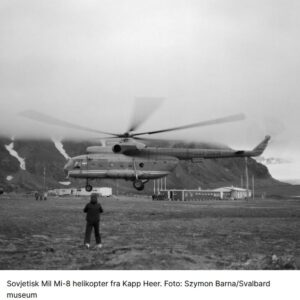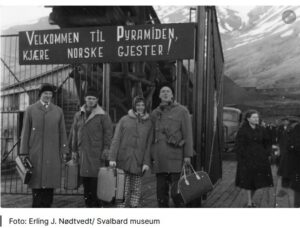Post war to 1991 - The Cold War Years
WWII revealed just how important Svalbard was on the global scene. At that time, it was the Allies and the Germans who had established bases on and around Svalbard to gather meteorological information to assist their war efforts.
However the strategic location of the archipelago brought it into focus during the Cold War. Svalbard’s location meant that it was part of a Russian defence strategy to keep its Northern Fleet free to move from its White Sea base.
In fact, some believe that unprofitable soviet coal mining activities in Svalbard were ongoing for the purpose of keeping a presence in the area. Or further, that the helicopter base at Kapp Heer was more than just a service to support economic and research activity. Rather it was actually a military base. There were many examples of Russia ignoring (or even thwarting) Norwegian legislation and sovereignty.
Some soviet historians began to argue that, since the Pomors were most likely the first inhabitants of Svalbard, Russia was entitled to special consideration in Svalbard. The practical reality of the Svalbard Treaty, when Norway assumed sovereignty, was that the various (mining) communities governed themselves. And this included Russian interests being relatively autonomous.
However, as oil exploration grew, and international frictions developed, Norway saw the need to restrict Russia’s autonomy in the region.
In 1977 a Soviet plane crashed on Hopen, a Svalbard island to the south east of the main archipelago. There ensured an argument about who had priority over the wreckage. The argument escalated to consular proportions in Oslo, with Soviet threats of ignoring Norway and going ashore anyway, effectively constituting an invasion. The situation finally calmed.

In another arena, the difference between the Norwegian mining facilities and the Soviet facilities was further evidence of underlying objectives. The Russian settlement at Pyramiden had a much higher standard of living facilities for the miners, showcasing Russian socialism behind the iron curtain.
We explored the option of visiting Pyramiden when we were in Longyearbyen. However, the regular tours have been stopped, and trying to find an independent guide to take you there is difficult, if not impossible. The war in Ukraine and ongoing international tensions have found their way to Svalbard.
I found this Svalbard Museum webpage fascinating. They concluded the article with this observation:
“Svalbard was in many ways a kind of Arctic Berlin where the East and West lived side by side. The difference was that there was no wall separating the communities. The Iron Curtain may have hung over the continent, but in Svalbard, the other world was just a short snowmobile ride away.”